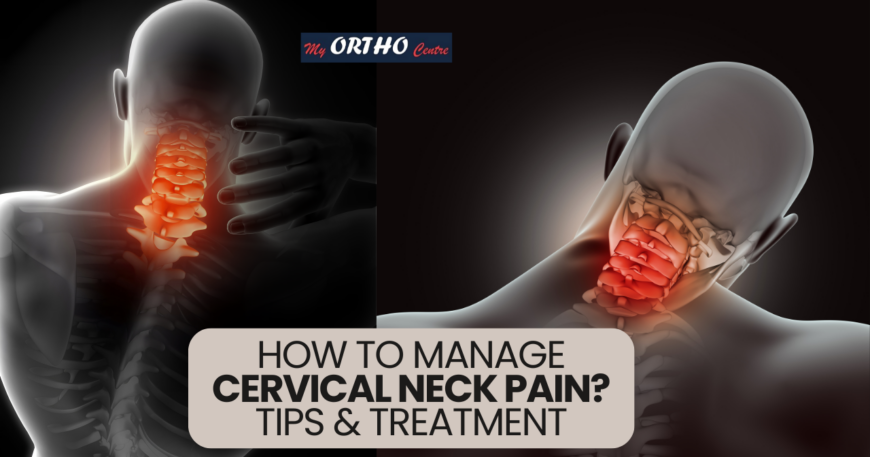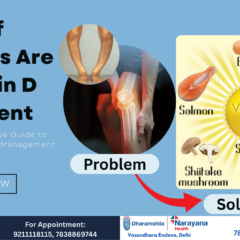
How to Manage Cervical Neck Pain: Tips and Treatment Options
Cervical neck pain is a common issue that many people face at some point in their lives. Whether it’s due to poor posture, an injury, or underlying medical conditions, neck pain can significantly affect your daily activities and overall quality of life. Managing this discomfort effectively requires understanding its causes, symptoms, and the best treatment options available. In this blog, we’ll explore the various aspects of cervical neck pain and provide insights into how you can manage it effectively.
Common Causes of Cervical Neck Pain
Cervical neck pain can arise from several factors, ranging from simple muscle strain to more complex medical conditions. Below are some of the most common causes:
- Neck Arthritis: Also known as cervical osteoarthritis, neck arthritis occurs when the cartilage between the cervical joints wears down. This condition can lead to stiffness, pain, and reduced range of motion in the neck. Over time, it can also cause the development of bone spurs, which may press on nearby nerves and lead to additional discomfort.
- Cervical Spondylosis: Cervical spondylosis is a degenerative condition that affects the discs and joints in the neck. As the discs lose their cushioning ability, they can put pressure on the spinal cord or nerves, leading to pain, numbness, and even weakness in the arms and hands. This condition is especially common in older adults and can worsen with age.
- Herniated Disc: A herniated disc in the cervical spine occurs when the soft inner material of a disc pushes through a tear in the outer layer. This can irritate nearby nerves and cause pain, tingling, or numbness that radiates down the arms. A herniated disc can result from injury or the natural aging process.
- Muscle Strain: Muscle strain is often caused by poor posture, such as slouching or holding the head in an awkward position for extended periods. This can lead to muscle tension and pain in the neck and shoulders. In many cases, simple lifestyle changes can alleviate this type of pain.
- Whiplash: Whiplash is a neck injury caused by a sudden, forceful movement of the head, often occurring during car accidents. The abrupt motion can strain the neck muscles and ligaments, leading to pain and stiffness. Whiplash can also cause headaches, dizziness, and difficulty concentrating.
Symptoms of Cervical Neck Pain
The symptoms of cervical neck pain can vary depending on the underlying cause. However, some common symptoms include:
- Neck Pain: The most obvious symptom is pain in the neck, which can range from mild discomfort to severe pain.
- Stiffness: Many people with cervical neck pain experience stiffness in the neck, making it difficult to turn the head or look over the shoulder.
- Headaches: Cervical neck pain is often accompanied by headaches, especially tension headaches that start at the base of the skull and radiate to the forehead.
- Numbness and Tingling: If the pain is due to nerve compression, you may experience numbness or tingling in the arms, hands, or fingers.
- Weakness: In some cases, cervical neck pain can lead to muscle weakness in the arms, making it difficult to perform everyday tasks.
How to Manage Cervical Neck Pain
Managing cervical neck pain effectively involves a combination of self-care strategies, physical therapy, and medical interventions. Here are some of the most effective ways to manage this condition:
1. Practice Good Posture
Maintaining good posture is crucial for preventing and managing cervical neck pain. Whether you’re sitting at a desk, driving, or standing, it’s important to keep your head aligned with your spine. Avoid slouching or leaning forward, and take regular breaks to stretch and move around. Using an ergonomic chair and adjusting your computer monitor to eye level can also help reduce strain on your neck.
2. Apply Heat or Cold Therapy
Applying heat or cold therapy can provide relief from cervical neck pain. A cold pack can reduce inflammation and numb the area, while a heating pad can relax tense muscles and improve blood flow. Alternate between heat and cold therapy, and apply for 15-20 minutes at a time.
3. Engage in Regular Exercise
Regular exercise is essential for maintaining neck strength and flexibility. Gentle exercises, such as neck stretches, yoga, and swimming, can help improve your range of motion and reduce pain. Strengthening exercises for the neck, shoulders, and upper back can also provide support to the cervical spine and prevent future injuries.
4. Use Over-the-Counter Pain Relievers
Over-the-counter pain relievers, such as ibuprofen or acetaminophen, can help manage mild to moderate cervical neck pain. These medications can reduce inflammation and provide temporary relief. However, it’s important to use them as directed and consult with a healthcare provider if the pain persists.
5. Try Physical Therapy
Physical therapy is often recommended for individuals with chronic cervical neck pain. A physical therapist can design a personalized exercise program to strengthen the neck muscles, improve posture, and increase flexibility. Physical therapy may also include techniques such as manual therapy, ultrasound, and electrical stimulation to relieve pain and promote healing.
6. Consider Alternative Therapies
Alternative therapies, such as chiropractic care, acupuncture, and massage therapy, can also be effective in managing cervical neck pain. Chiropractic adjustments can help realign the spine and reduce nerve compression, while acupuncture and massage therapy can relieve muscle tension and improve circulation. Always consult with a qualified practitioner before starting any alternative therapy.
7. Avoid Prolonged Neck Strain
Avoiding prolonged neck strain is key to preventing and managing cervical neck pain. Be mindful of activities that put extra stress on the neck, such as looking down at your phone for extended periods or sleeping in an awkward position. Using a supportive pillow and practicing neck-friendly habits can make a significant difference in reducing pain.
8. Seek Medical Intervention
If cervical neck pain persists despite self-care measures, it’s important to seek medical intervention. Your healthcare provider may recommend imaging tests, such as X-rays or an MRI, to diagnose the underlying cause of your pain. Depending on the diagnosis, treatment options may include prescription medications, corticosteroid injections, or even surgery in severe cases.
Contact My Ortho Centre for Expert Care
At My Ortho Centre, we understand the impact that cervical neck pain can have on your life. Our team of experienced orthopedic specialists is dedicated to providing comprehensive care and personalized treatment plans for patients suffering from neck pain and related conditions. Whether you’re dealing with neck arthritis, cervical spondylosis, or any other orthopedic issue, we’re here to help.
If you’re experiencing cervical neck pain and would like to learn more about your treatment options, don’t hesitate to reach out. Contact us today for more information or to schedule a consultation with our experts. Simply fill out the form below, and one of our team members will get back to you shortly.
Conclusion
Managing cervical neck pain requires a proactive approach that includes good posture, regular exercise, and appropriate medical care. By understanding the causes and symptoms of this condition, you can take the necessary steps to alleviate pain and improve your quality of life. Remember, early intervention is key to preventing further complications and ensuring a speedy recovery. Don’t let neck pain hold you back – take action today and seek the help you need.


